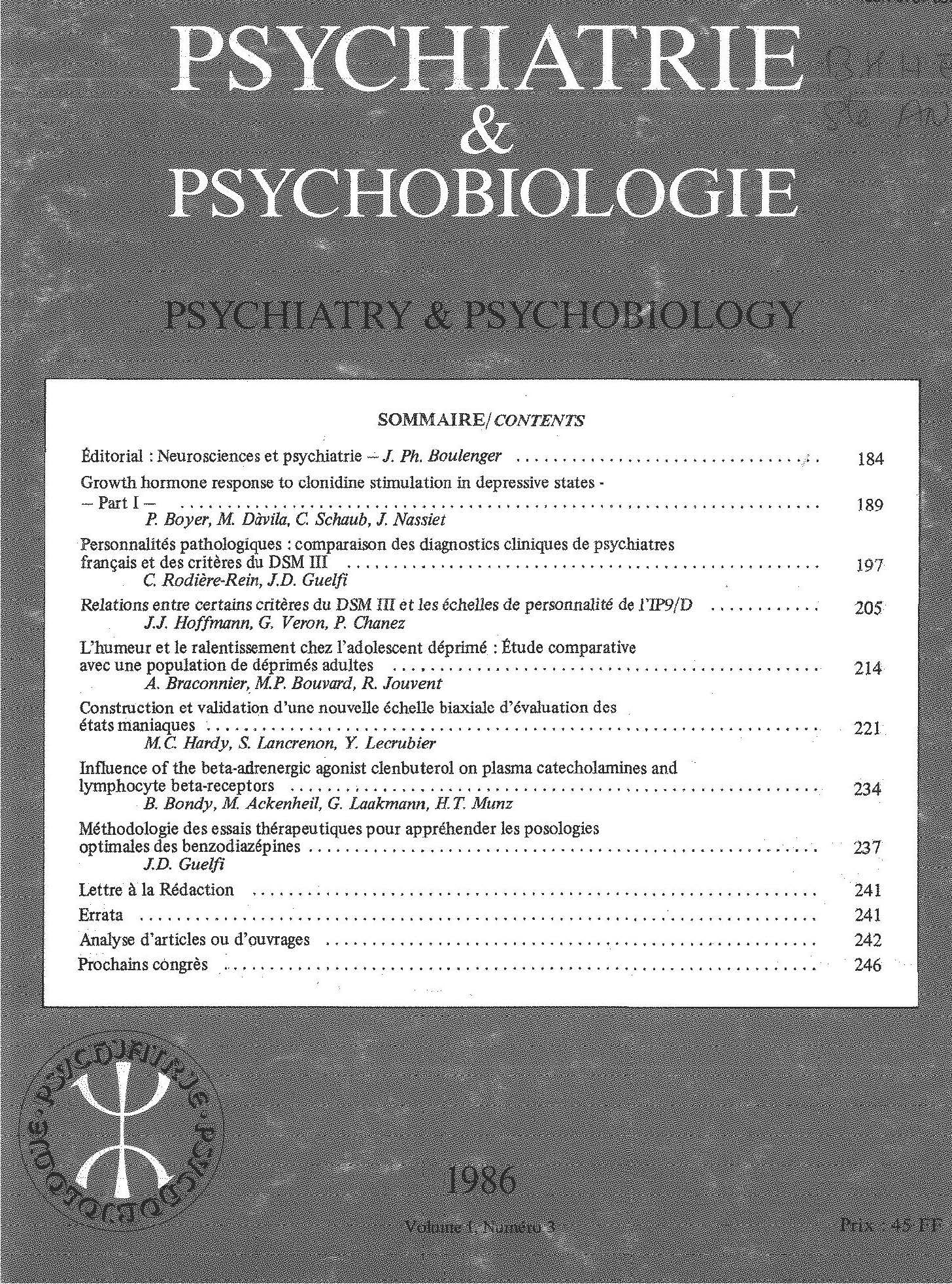Article contents
Les troubles de l'alimentation dans une population étudiante
Published online by Cambridge University Press: 28 April 2020
Résumé
De nombreuses études récentes montrent que la boulimie est une perturbation fréquente des conduites alimentaires de l’adulte dont la prévalence dans la population féminine avoisinerait 10 %. Il reste cependant difficile d’être plus précis, car les critères diagnostiques, les instruments d’évaluation et les populations varient beaucoup entre eux.
A titre d’exemple, la définition du DSM III ne retient pas la présence des vomissements comme critére obligatoire, contrairement à d’autres.
Les auteurs présentent également les premiers résultats d’une enquête effectuée auprès de l’ensemble des étudiants de l’Université de Genève. A partir de 4200 des 12000 questionnaires qui ont été retournés, la representativité selon le sexe et l’âge a été obtenue en sélectionnant un groupe de 3102 questionnaires valides, soit 25.7 % du total. Au moment de l’étude, 20.5 % des femmes et 8.6 % des hommes utilisaient l’un des moyens de contrôle du poids, régime inclus, et 2.6 % des femmes et 0.5 % des hommes recouraient aux vomissements. Concernant la boulimie, si ce travail ne permet pas de conclusions définitives, il permet néanmoins d’approcher un groupe à risque boulimique avoisinant 4 à 6 % des femmes et 0.5 à 0.8 % des hommes. Ces résultats ainsi que les ratios F/H et les âges de début sont superposables aux valeurs des études de référence. Les rapports que la boulimie entretient avec la dépression, les conduites toxicomaniaques ou d’alcoolisation, voire les troubles paniques, phobiques et obsessifs-compulsifs devraient être mieux étudiés afin d’éviter les erreurs de diagnostic. La recherche d’un poids idéal est une caractéristique de ce syndrome. Un traitement visant à modifier la représentation de ce paramétre constituerait un des éléments utiles d’une thérapie cognitive et informative.
Summary
Many recent studies confirm that bulimia is a frequent adult eating disorder, with an approximate 10% prevalence in women. However it remains difficult to be more precise bccause of the wide variations between diagnostic criteria, assessment instruments, and populations. For example, the DSM III definition does not specify vomiting as a necessary criterion (table 2).
The authors present the first results of a survey among the student population of the University of Geneva (CH). 4200 of the 12.000 questionnaires were returned. A representative sample population as regards sex and age was obtained through the selection of 3102 valid questionnaires (25.7% of the total). At the time of the study, 20.5% of the females and 8.6% of the males used one of the weight control means, including dieting, and 2.6% of the females and 0.5% of the males resorted to vomiting ( table 3). This survey provides no definitive conclusions, as far as bulimia is concerned, but allows the definition of a “possible bulimia” group of 4 of 6% of females and 0.5 to 0.8% of males. The results, F/M ratios and student ages at onset are very close to those reported in the reference studies (table 4).
The relations between bulimia and depression, drug addiction or alcoholism, and panic, phobic and obsessive-compulsive disorders require further investigation to avoid inaccurate diagnoses. The bulimic palient's tendency to seek to attain an ideal weight is one of the features of this syndrome. Treatment aimed at progressively modifying the patient's ideal weight-representation would constitute a useful element within the framework of cognitive, informative therapy.
Keywords
- Type
- Research Article
- Information
- Copyright
- Copyright © European Psychiatric Association 1987
References
Bibliographie/References
- 1
- Cited by



Comments
No Comments have been published for this article.